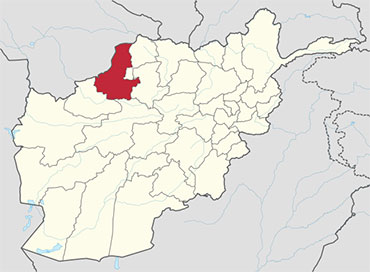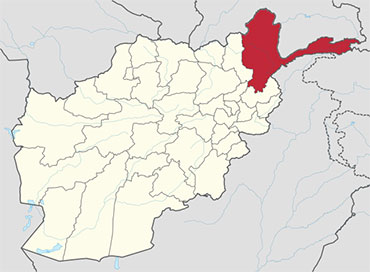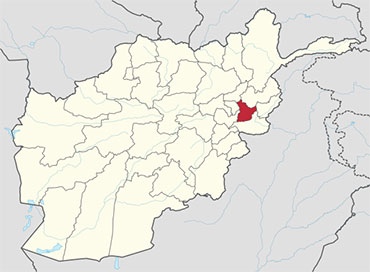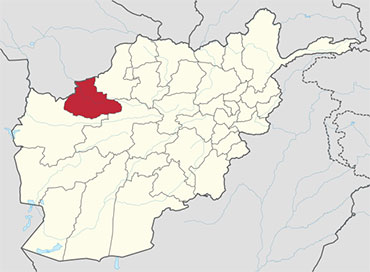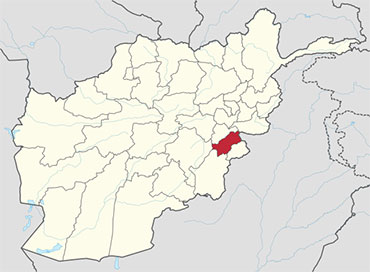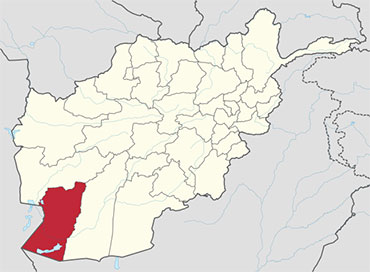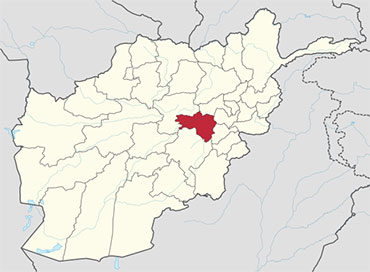 Nangarhar is one of the 34 provinces of Afghanistan, located in the eastern part of the country. It is divided into twenty-two districts and has a population of about 1,436,000. The city of Jalalabad is the capital of Nangarhar province.
Nangarhar is one of the 34 provinces of Afghanistan, located in the eastern part of the country. It is divided into twenty-two districts and has a population of about 1,436,000. The city of Jalalabad is the capital of Nangarhar province.
History
Early History
The province was originally part of the Achaemenid Empire, in the Gandhara satrapy (province). The Nangarhar province territory and the Eastern Iranian peoples there fell to the Maurya Empire, which was led by Chandragupta Maurya. The Mauryas introduced Hinduism and Buddhism to the region, and were planning to capture more territory in Central Asia until they faced local Greco-Bactrian forces. Seleucus is said to have reached a peace treaty with Chandragupta by giving control of the territory south of the Hindu Kush to the Mauryas upon intermarriage and 500 elephants.
Song Yun, a Chinese monk visited Nangarhar in 520 AD, claimed that the people in the area were Buddhists. Yun came across a vihara (monastery) in Nangarhar (Na-lka-lo-hu) containing the skull of Buddha, and another of Kekalam (probably Mihtarlam in Laghman province) where 13 pieces of the cloak of Buddha and his 18 feet long mast were preserved. In the city of Naki, a tooth and hair of Buddha were preserved and in the Kupala cave Buddha’s shadow reflected close to which he saw a stone tablet which was at that time considered to be related to Buddha (probably the stone tablet of Ashoka in Darūntah).
The region fell to the Ghaznavids after defeating Jayapala in the late 10th century. It later fell to the Ghorids followed by the Khiljis, Lodhis and the Moghuals, until finally becoming part of Ahmad Shah Durrani’s Afghan Empire in 1747.
During the First Anglo-Afghan War, the invading British-led Indian forces were defeated on their way to Rawalpindi in 1842. British-led Indian forces returned in 1878 but retreated a couple of years later. Some fighting took place during the 1919 Third Anglo-Afghan War between the Afghan army that were led by King Amanullah Khan and British-Indians near the Durand Line border areas.
The province remained relatively calm until the 1980s Soviet war in Afghanistan. Nangarhar was used by pro-Pakistani mujahideen (rebel forces) fighting against the Soviet-backed Democratic Republic of Afghanistan. The Pakistani-trained mujahideen received funding from the United States and Saudi Arabia. Many Arab fighters from the Arab World had been fighting against the government forces of Mohammad Najibullah, who ultimately defeated them near Jalalabad. In April 1992, Najibullah resigned as President and the various mujahideen took control over the country. When the 1992 Peshawar Accord failed, the mujahideen turned guns on each other and started a nationwide civil war. This was followed by the Taliban take-over in 1996 and the establishment of al-Qaeda training camps in Nangarhar province.
Recent History
Osama bin Laden held a strong position in Nangargar during the late 1990s. He led a fight against US-led forces in the 2001 Tora Bora campaign. He ultimately escaped to Abottabad, Pakistan, where he was killed in a night raid by members of Seal Team Six in 2011.
After the removal of the Taliban government and the formation of the Karzai administration in late 2001, U.S.-led Afghan National Security Forces (ANSF) gradually established authority across the province. Despite this, Taliban insurgents continue to stage attacks against Afghan government forces. The Haqqani Network and militants loyal to Gulbuddin Hekmatyar are often blamed for the attacks, which sometimes include major suicide bombings. Several incursions by Pakistani military forces have also been reported in the districts next to the Durand Line border. The focus of the conflict is on the Kabul and Kunar rivers, which run through the Nangarhar province.
Healthcare
The percentage of households with clean drinking water fell from 43% in 2005 to 8% in 2011. The percentage of births attended to by a skilled birth attendant increased from 22% in 2005 to 60% in 2011.
Economy
The Jalalabad plain is one of the principal agricultural areas of Afghanistan. The strong agricultural base, coupled with the crucial trade route connecting Kabul with Peshawar, makes Nangarhar one of the more economically diverse and functional provinces of Afghanistan. Torkham is one of the major border crossings between Afghanistan and Pakistan. It is the busiest port of entry between the two countries, serving as a major economical hub for the province.
Nangarhar was once a major center of opium poppy production in the country, but by 2005 the province had reportedly decreased its production of poppy by up to 95%. This was to become one of the success stories of the Afghan poppy eradication program. However, the eradication program has often left peasant farmers destitute and, in 2006, farmers were reported to have surrendered their children to opium dealers in payment on their debts. The illicit poppy cultivation takes place in Khogiani, Ghanikhil, Chaparhar, Sherzad, Toorghar, Shenwari and other remote districts. The farmers cite a lack of water and also poverty as reasons for continued poppy cultivation. Poppy was also cultivated in Goshta District, Lalpura which borders Pakistan but now the people predominately cultivate wheat and other legal crops.
Demography
As of 2013, the total population of the province is about 1,436,000. According to the Institute for the Study of War, “the population is overwhelmingly Pashtun; less than ten percent are Pashai, Tajik, Arab, or other minorities.” According to the Naval Postgraduate School, the ethnic groups of the province are as follows: 91.1% Pashtun; 3.6% Pashai; 2.6% Arab; 1.6% Tajik; and 2.1% other.
Districts
Nangarhar province is divided into about 22 districts.
| District | Population | Area |
|---|---|---|
| Dih Bala | 33,294 | |
| Achin | 95,468 | |
| Bihsud | 118,934 | |
| Chaparhar | 57,339 | |
| Dara-I-Nur | 98,202 | |
| Bati Kot | 31,308 | |
| Dur Baba | 13,479 | |
| Goshta | 31,130 | |
| Hisarak | 28,376 | |
| Jalalabad | 205,423 | |
| Kama | 52,527 | |
| Khogyani | 111,479 | |
| Kot | 52,154 | |
| Kuz Kunar | 42,823 | |
| Lal Pur | 18,997 | |
| Momand Dara | 42,103 | |
| Nazyan | 16,328 | |
| Pachir Aw Agam | 40,141 | |
| Rodat | 63,357 | |
| Sherzad | 63,232 | |
| Shinwar | 64,872 | |
| Surkh Rod | 91,548 |
